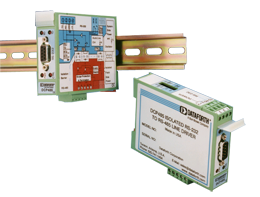MAQ20-960
MAQ20 Python API

MAQ20-960
MAQ20 Python API
Description
The MAQ®20 Python API uses an object-oriented approach for communicating with MAQ20 systems, which provides an intuitive interface where the low-level Modbus commands are hidden from normal use. Users can focus on solving the measurement problems at hand, instead of re-inventing how to communicate with modules.
Before using the MAQ20 Python API, you may find it helpful to be acquainted with basic Python programming and understand the concept of objects.
Features
- Communication: to MAQ20 systems from a host PC.
- Address offsetting: When a module is registered in a system, addresses are offset by 2000 * R, where R is the Registration Number. The API uses relative addressing for the modules, this means that when using low-level Modbus commands, 0 to 1999 are valid addresses.
- Counts to Engineering units: the API reads information it needs to know at initialization to do this conversion.
- Rounding: when dealing with small quantities such as millivolts it can get tedious to look at a bunch of trailing decimals. The API does meaningful rounding to any module up to 3 significant units of Eng. units per count.
Documents
Specifications
- Weight 0 grams (0 ounces)
Competitive Cross-Reference
- No cross reference is available.
The information available through this competitive cross reference guide are based upon product catalog information obtained from a variety of sources. The competitive cross reference information is being provided to you free of charge for your use. While Dataforth Corp has used reasonable efforts to ensure data accuracy, Dataforth Corp does not guarantee that it is error-free, nor does Dataforth Corp make any other representation, warranty or guarantee that the information is accurate, correct, reliable or up-to-date. Dataforth Corp expressly disclaims all implied warranties regarding this information, including but not limited to any implied warranties of merchantability or fitness for a particular purpose.
This information is provided only as a convenience on an "as is" basis and Dataforth Corp. or its representatives or distributors are not responsible for any incorrect, inaccurate, or incomplete information. You are solely responsible for (1) selecting the appropriate Dataforth products for your application, (2) designing, validating and testing your application, and (3) ensuring your application meets applicable standards, and any other safety, security, or other requirements.
This information is provided only as a convenience on an "as is" basis and Dataforth Corp. or its representatives or distributors are not responsible for any incorrect, inaccurate, or incomplete information. You are solely responsible for (1) selecting the appropriate Dataforth products for your application, (2) designing, validating and testing your application, and (3) ensuring your application meets applicable standards, and any other safety, security, or other requirements.
FAQ
Was this content helpful?
Thank you for your feedback!






